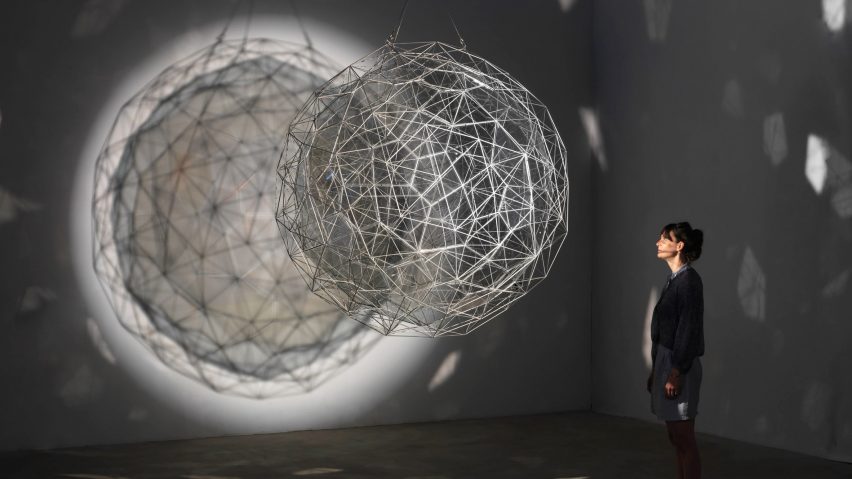
Olafur Eliasson: In Real Life encourages visitors to engage with climate change
Three decades of work by the Danish-Icelandic artist Olafur Eliasson including an indoor rainbow and a tunnel of fog prompt visitors to London's Tate Modern to think about their impact on the planet.
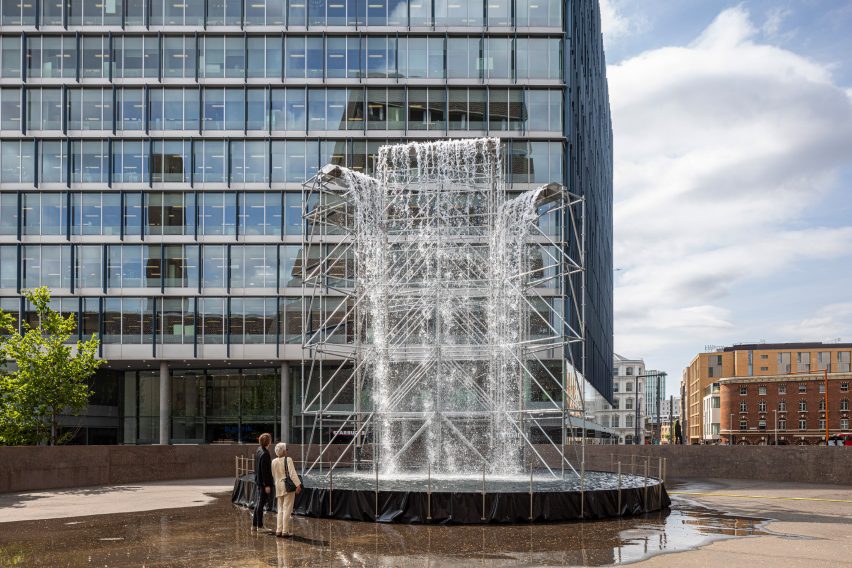
The exhibition brings together nearly 40 works, most of which haven't been seen in the UK before, including some that have been created specifically for Olafur Eliasson: In Real Life.
The first of these greets visitors outside the London museum – a 11-metre-high scaffolding structure with water cascading over its surface, called Waterfall.
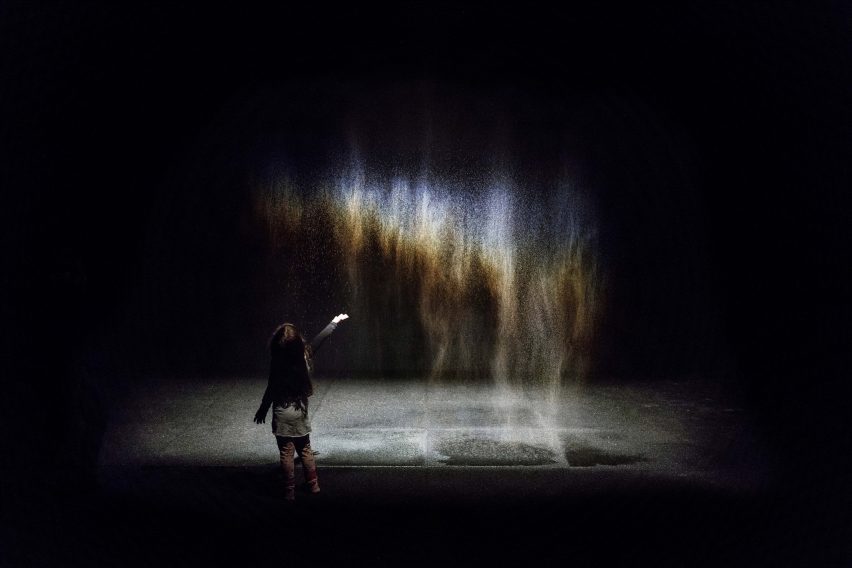
Once inside, Eliasson's interest in natural phenomena and weather patterns continues, with explorations of water, light and mist in a number of works. These include the earliest piece in the show – 1993's Beauty – an indoor rainbow created by shining light through gently falling water.
Moss Wall from the following year is a 20-metre wall covered with reindeer moss, a slow-growing, spongy lichen native to Scandinavia.
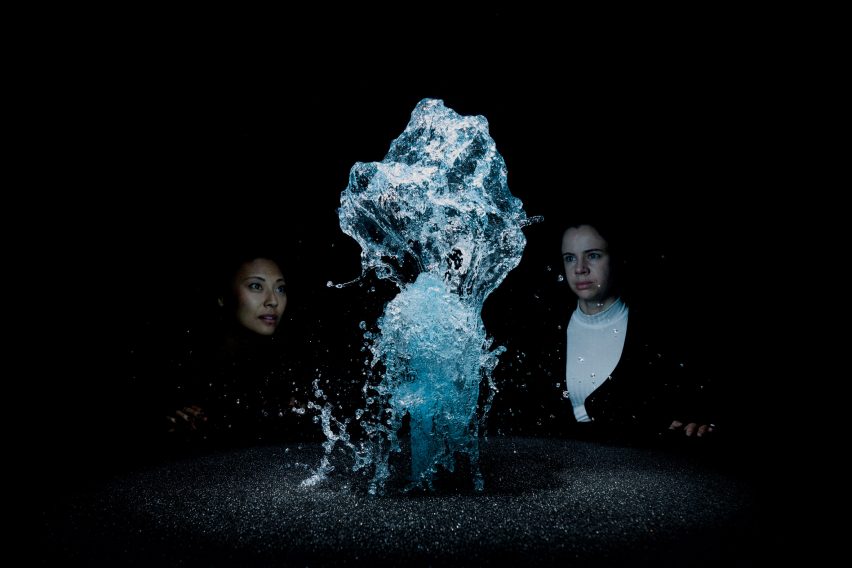
Like many of the works in the show, these encourage the viewer to consider their relationship with the natural world and the impact that human behaviour has on it.
A series of photographs of Iceland's glaciers taken in 1999 will be replaced in the autumn with a new work that shows the original images alongside an updated series taken 20 years on that detail the changes to the landscape in the intervening years.
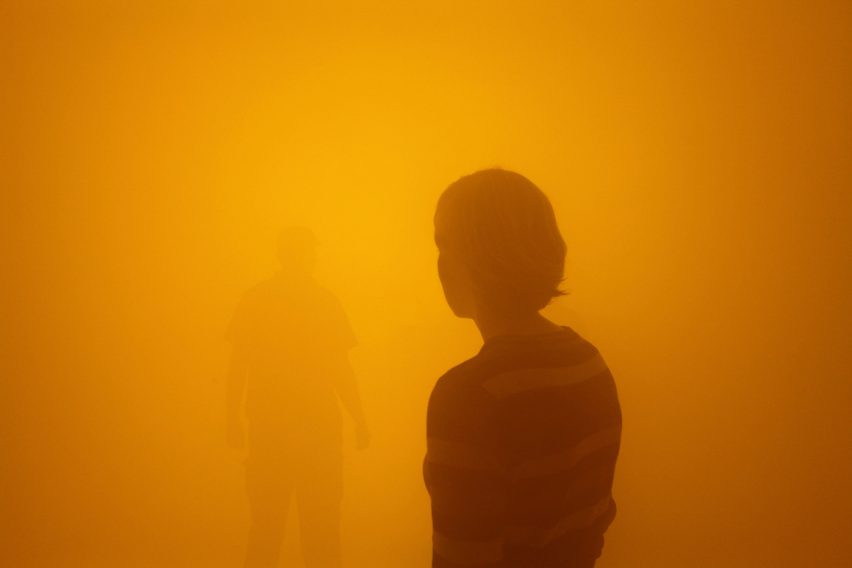
Created environments, and our response to and impact on them, are explored in the show alongside the natural environment.
Your blind passenger invites visitors to walk through a 39-metre corridor filled with fog so thick that they can't see beyond the end of their own arm.
Further on, Your uncertain shadow allows visitors to cast brightly coloured shadows on the wall behind them, whilst mono-frequency lights in Room for one colour – a space lit in lurid yellow reduces the viewer's visual environment to yellow and black.
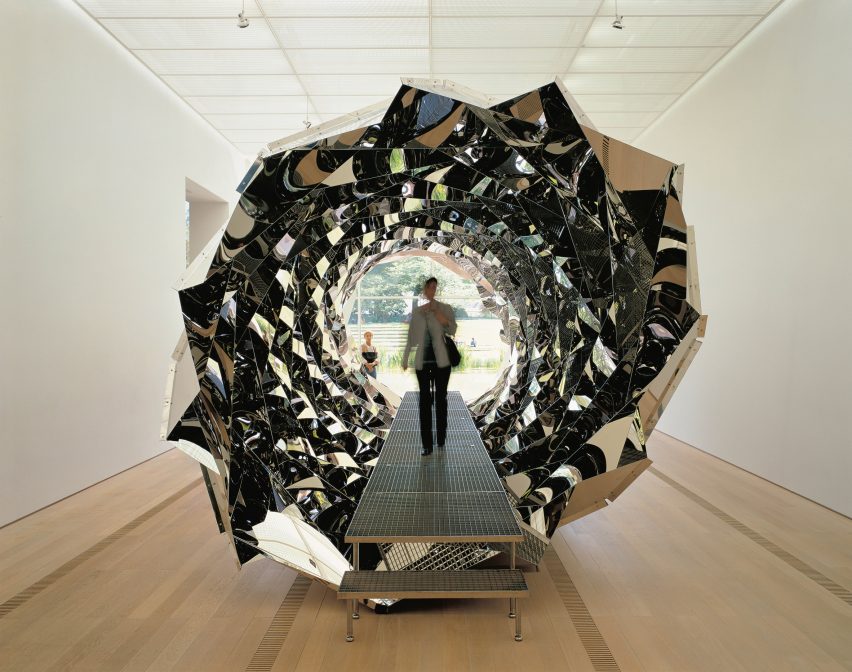
Olafur Eliasson: In Real Life is curated by Tate Modern's senior curator of international art, Mark Godfrey, with assistant curator Emma Lewis. The pair worked in close collaboration with Eliasson's Berlin-based studio to realise the exhibition.
"Eliasson creates works that continually prompt viewers to think about the nature of perception," said Godfrey. "Many of his installations play with reflections, inversions, after-images and shifting colours, to challenge the way we navigate and perceive our environments."
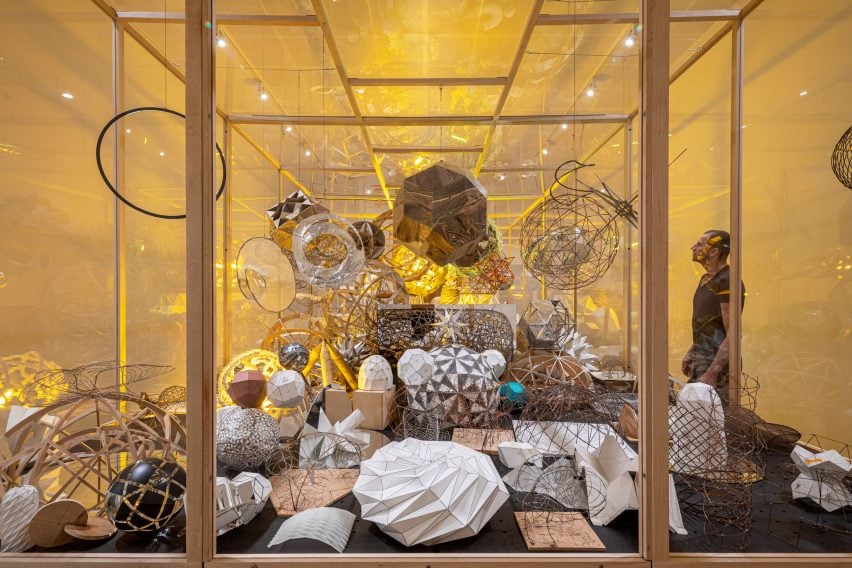
Central to the show is a model room that brings together 450 prototypes and studies that demonstrate the artist's work within his Berlin-based studio.
The models also demonstrate his collaborations with the deceased Icelandic mathematician and architect Einar Thorsteinn, who inspired Eliasson's interest in geometry, shape and crystalline structure.
This is demonstrated in Stardust particle, a hanging sculpture that comprises two irregular polyhedra, one within the other, held in place with stainless steel struts. Translucent mirror glass panels cast geometric shadows on the wall behind.
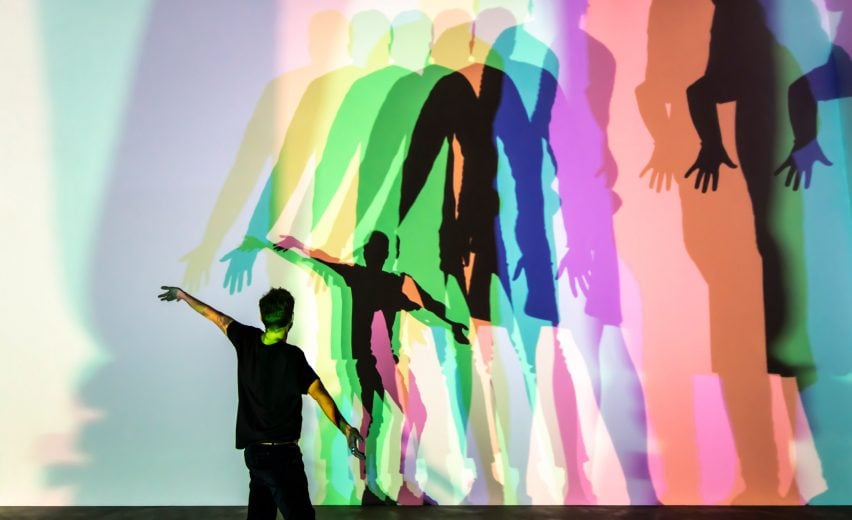
The exhibition marks Eliasson's return to Tate Modern following Ice Watch at the end of last year, that saw the artist install 24 blocks of glacial ice extracted from waters around Greenland outside the museum where they gradually melted.
Eliasson said at the time that he hoped the installation would "give feelings to things that are otherwise unemotional", and encourage governments, big business and the public to act on climate change. A further six blocks were placed outside the Foster+Partners-designed Bloomberg headquarters in the City of London.
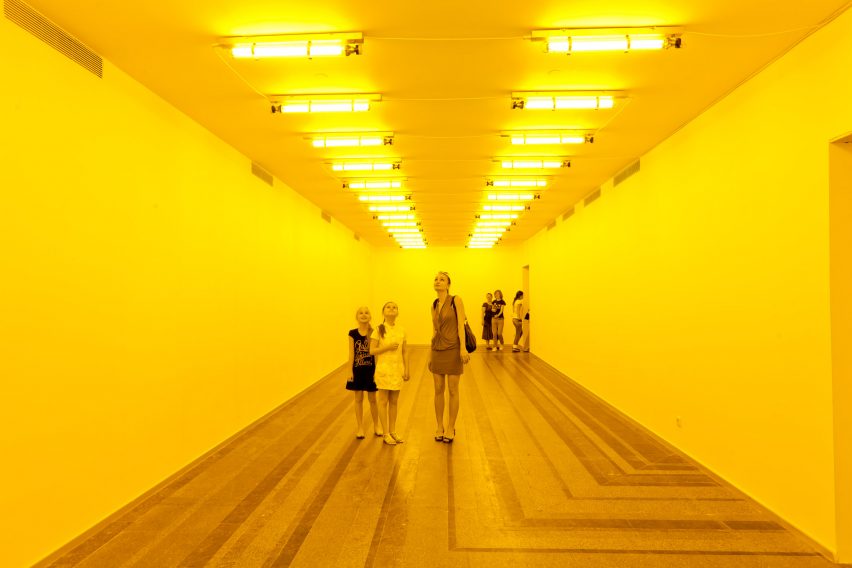
Prior to this, 2003's The weather project saw the museum's Turbine Hall space illuminated by a giant sun, creating a social space that encouraged visitors to stay and interact with one another.
Throughout the current exhibition's run from 11 July 2019 until 5 January 2020, Studio Olafur Eliasson's kitchen team SOE Kitchen has collaborated with Tate's in-house catering facilities on a locally sourced, vegetarian menu to be served in the Terrace Bar.
The restaurant has been decorated with works by Eliasson including the OE Quasi light that the artist recently designed for Danish lighting brand Louis Poulsen.
Photography is by Anders Sune Berg, unless stated.